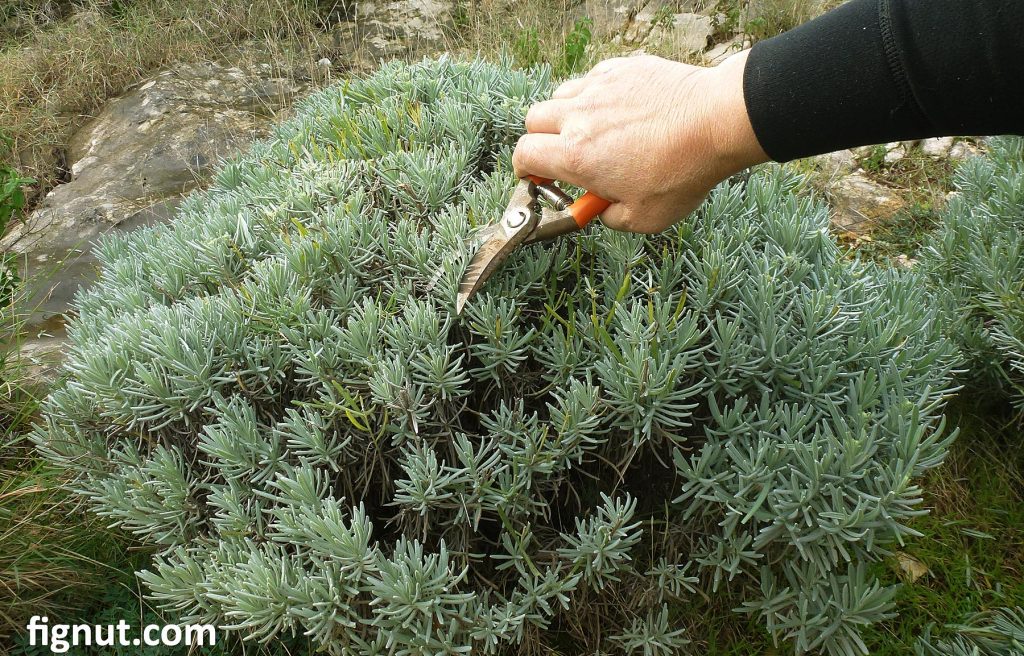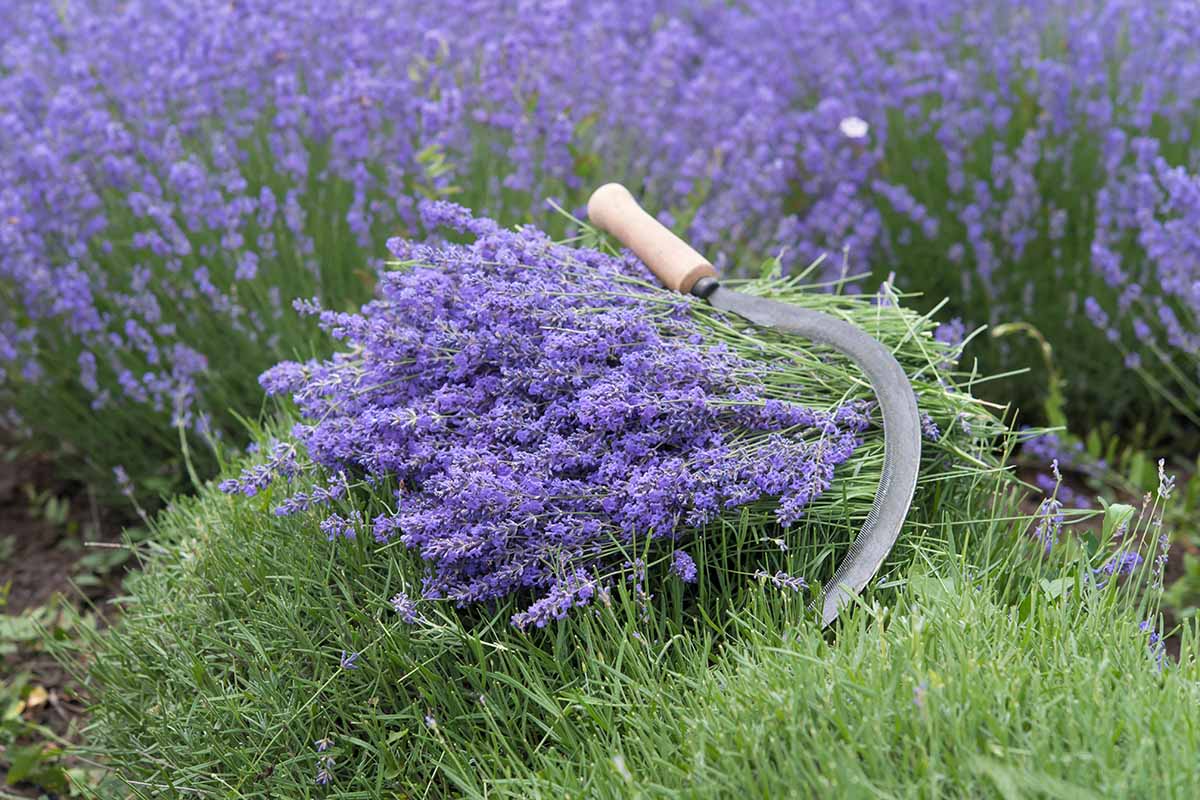Why Pruning is Essential for Lavender Plants
Pruning is a crucial aspect of lavender plant care, and understanding its importance can make all the difference in promoting healthy growth and encouraging blooming. By pruning your lavender plants regularly, you can prevent woody stems from forming, which can lead to a decline in the plant’s overall health. Pruning also helps control the size and shape of the plant, making it easier to maintain and harvest.
Lavender plants that are not pruned regularly can become leggy and unproductive, producing fewer blooms and less fragrant foliage. On the other hand, pruning stimulates new growth, encourages branching, and increases the plant’s resistance to disease and pests. When to trim back lavender plants is a common question among gardeners, and the answer lies in understanding the plant’s growth cycle and pruning needs.
Pruning lavender plants at the right time can help promote healthy growth and blooming. For example, pruning in the spring encourages new growth and helps the plant produce more blooms. Pruning in the fall, on the other hand, helps prepare the plant for the winter months and promotes root growth. By pruning your lavender plants at the right time, you can enjoy a bountiful harvest of fragrant blooms and foliage.
In addition to promoting healthy growth and blooming, pruning lavender plants can also help control pests and diseases. By removing dead or damaged stems, you can prevent the spread of disease and encourage healthy growth. Pruning also helps improve air circulation, which can help prevent fungal diseases that thrive in humid environments.
Overall, pruning is an essential part of lavender plant care, and understanding its importance can help you grow healthy and productive plants. By pruning your lavender plants regularly, you can promote healthy growth, encourage blooming, and enjoy a bountiful harvest of fragrant blooms and foliage.
Identifying the Right Time to Prune Your Lavender
When it comes to pruning lavender plants, timing is everything. Pruning at the right time can help promote healthy growth, encourage blooming, and prevent woody stems. On the other hand, pruning at the wrong time can be detrimental to the plant’s health. So, when to trim back lavender plants?
The best time to prune lavender plants depends on the plant’s growth cycle, climate, and region. In general, lavender plants should be pruned in the spring or fall, when the plant is dormant. Pruning in the spring helps to promote new growth and encourages blooming, while pruning in the fall helps to prepare the plant for the winter months and promotes root growth.
However, the specific pruning time may vary depending on the climate and region. In hot and dry climates, lavender plants may need to be pruned more frequently to prevent woody stems and promote new growth. In cool and wet climates, lavender plants may need to be pruned less frequently to prevent disease and promote healthy growth.
It’s also important to consider the plant’s growth cycle when determining the best time to prune. Lavender plants typically bloom in the summer months, and pruning during this time can reduce the number of blooms. Pruning after the blooming period, however, can help to promote new growth and encourage more blooms the following year.
Additionally, the region and climate can also affect the pruning time. For example, in regions with extreme temperatures, lavender plants may need to be pruned more frequently to prevent damage from frost or heat. In regions with mild winters, lavender plants may not need to be pruned as frequently.
Ultimately, the key to determining the right time to prune your lavender plants is to observe the plant’s growth cycle and adjust your pruning schedule accordingly. By pruning at the right time, you can help promote healthy growth, encourage blooming, and enjoy a bountiful harvest of fragrant blooms and foliage.
How to Prune Lavender Plants for Maximum Blooms
Pruning lavender plants is an essential step in promoting healthy growth and encouraging blooming. When done correctly, pruning can help to increase the number of blooms, improve the plant’s shape and size, and prevent woody stems. Here’s a step-by-step guide on how to prune lavender plants for maximum blooms:
Tools Needed:
- Pruning shears or clippers
- Long-handled loppers (for larger plants)
- Gloves (to protect hands from thorns and sap)
Step 1: Inspect the Plant
Before pruning, inspect the plant for any dead, diseased, or damaged stems. Remove any weak or spindly growth, as this will help to promote healthy growth and encourage blooming.
Step 2: Cut Back the Stems
Using your pruning shears or clippers, cut back the stems of the lavender plant to about one-third to one-half of their height. This will help to encourage new growth and promote blooming.
Step 3: Shape the Plant
Use your pruning shears or clippers to shape the plant into a neat and compact shape. Remove any stems that are growing outside of the plant’s natural shape, and trim back any stems that are too long.
Step 4: Thin Out the Plant
Use your pruning shears or clippers to thin out the plant, removing any stems that are growing too close together. This will help to improve air circulation and promote healthy growth.
Step 5: Check for Woody Stems
After pruning, check the plant for any woody stems. If you find any, remove them immediately, as they can be a sign of the plant’s decline.
By following these steps, you can help to promote healthy growth and encourage blooming in your lavender plants. Remember to prune your lavender plants regularly, as this will help to keep them healthy and thriving.
Pruning New vs. Established Lavender Plants
When it comes to pruning lavender plants, it’s essential to consider the age and maturity of the plant. New and established lavender plants have different pruning needs, and understanding these differences can help promote healthy growth and encourage blooming.
New Lavender Plants:
New lavender plants require more frequent pruning to encourage bushy growth and prevent legginess. Prune new plants in the spring, removing any weak or spindly growth, and shape the plant to maintain a compact shape. This will help to promote healthy growth and encourage blooming.
Established Lavender Plants:
Established lavender plants, on the other hand, require less frequent pruning. Prune established plants in the spring or fall, removing any dead or damaged stems, and shape the plant to maintain its natural shape. This will help to promote new growth and encourage blooming.
Key Differences:
The key differences between pruning new and established lavender plants are:
- Frequency: New plants require more frequent pruning, while established plants require less frequent pruning.
- Timing: New plants should be pruned in the spring, while established plants can be pruned in the spring or fall.
- Technique: New plants require more aggressive pruning to encourage bushy growth, while established plants require more gentle pruning to maintain shape and promote new growth.
By understanding the differences in pruning new and established lavender plants, you can provide the right care for your plants and promote healthy growth and blooming.
Remember, pruning is an essential part of lavender plant care, and when done correctly, can help to promote healthy growth, encourage blooming, and prevent woody stems. By pruning your lavender plants at the right time and using the right techniques, you can enjoy a bountiful harvest of fragrant blooms and foliage.
Common Mistakes to Avoid When Pruning Lavender
Pruning lavender plants can be a delicate process, and making mistakes can be detrimental to the plant’s health. Here are some common mistakes to avoid when pruning lavender plants:
Pruning Too Much or Too Little:
Pruning too much can cause stress to the plant, leading to disease and pests. On the other hand, pruning too little can result in a leggy and unproductive plant. It’s essential to find the right balance when pruning lavender plants.
Pruning at the Wrong Time:
Pruning lavender plants at the wrong time can be detrimental to the plant’s health. Pruning in the middle of the growing season can cause the plant to become stressed, leading to disease and pests. Pruning in the fall or winter can also be problematic, as it can cause the plant to become vulnerable to cold temperatures.
Not Using the Right Tools:
Using the wrong tools can cause damage to the plant and make pruning more difficult. It’s essential to use sharp and clean pruning shears or clippers to prevent spreading disease and to make clean cuts.
Not Pruning Dead or Damaged Stems:
Not pruning dead or damaged stems can cause the plant to become diseased and pests to infest the plant. It’s essential to remove any dead or damaged stems to promote healthy growth and prevent disease.
Pruning Without a Plan:
Pruning without a plan can result in a plant that is uneven and unproductive. It’s essential to have a plan when pruning lavender plants, including knowing the right time to prune, the right tools to use, and the right techniques to employ.
By avoiding these common mistakes, you can ensure that your lavender plants are healthy and productive. Remember, pruning is an essential part of lavender plant care, and when done correctly, can help to promote healthy growth, encourage blooming, and prevent woody stems.
Lavender Pruning Tips for Different Varieties
Lavender plants come in a variety of species, each with its own unique characteristics and pruning needs. Here are some tips on pruning different varieties of lavender plants:
English Lavender (Lavandula angustifolia):
English lavender is a popular variety of lavender that is known for its compact growth habit and fragrant flowers. When pruning English lavender, it’s essential to prune the plant in the spring, removing any dead or damaged stems. This will help to promote healthy growth and encourage blooming.
French Lavender (Lavandula stoechas):
French lavender is a variety of lavender that is known for its tall, upright growth habit and vibrant purple flowers. When pruning French lavender, it’s essential to prune the plant in the fall, removing any dead or damaged stems. This will help to promote healthy growth and encourage blooming.
Spanish Lavender (Lavandula stoechas subsp. pedunculata):
Spanish lavender is a variety of lavender that is known for its compact growth habit and fragrant flowers. When pruning Spanish lavender, it’s essential to prune the plant in the spring, removing any dead or damaged stems. This will help to promote healthy growth and encourage blooming.
Other Varieties:
There are many other varieties of lavender plants, each with its own unique characteristics and pruning needs. When pruning other varieties of lavender, it’s essential to research the specific pruning needs of the variety to ensure that you are providing the best care for the plant.
General Tips:
Regardless of the variety of lavender plant, there are some general tips to keep in mind when pruning. Always use sharp, clean pruning shears or clippers to prevent spreading disease and to make clean cuts. Prune the plant in the spring or fall, depending on the variety, and remove any dead or damaged stems. This will help to promote healthy growth and encourage blooming.
By following these tips, you can help to ensure that your lavender plants are healthy and productive. Remember, pruning is an essential part of lavender plant care, and when done correctly, can help to promote healthy growth, encourage blooming, and prevent woody stems.
Pruning Lavender in Different Climates and Regions
Lavender plants can be grown in a variety of climates and regions, and the pruning needs of the plant can vary depending on the specific climate and region. Here are some tips on pruning lavender plants in different climates and regions:
Hot and Dry Climates:
In hot and dry climates, lavender plants require more frequent pruning to prevent woody stems and promote healthy growth. Prune the plant in the spring and again in the fall, removing any dead or damaged stems. This will help to promote healthy growth and encourage blooming.
Cool and Wet Climates:
In cool and wet climates, lavender plants require less frequent pruning. Prune the plant in the spring, removing any dead or damaged stems. This will help to promote healthy growth and encourage blooming.
Regions with Extreme Temperatures:
In regions with extreme temperatures, lavender plants require special care. Prune the plant in the spring and again in the fall, removing any dead or damaged stems. This will help to promote healthy growth and encourage blooming.
General Tips:
Regardless of the climate or region, there are some general tips to keep in mind when pruning lavender plants. Always use sharp, clean pruning shears or clippers to prevent spreading disease and to make clean cuts. Prune the plant in the spring or fall, depending on the climate and region, and remove any dead or damaged stems. This will help to promote healthy growth and encourage blooming.
By following these tips, you can help to ensure that your lavender plants are healthy and productive, regardless of the climate or region. Remember, pruning is an essential part of lavender plant care, and when done correctly, can help to promote healthy growth, encourage blooming, and prevent woody stems.
Maintaining Your Lavender Plants After Pruning
After pruning your lavender plants, it’s essential to maintain them properly to promote healthy growth and blooming. Here are some tips on how to maintain your lavender plants after pruning:
Watering:
Lavender plants require well-draining soil and moderate watering. Water your lavender plants regularly, but make sure not to overwater them. Overwatering can lead to root rot and other problems.
Fertilizing:
Lavender plants require minimal fertilization. Feed your lavender plants with a balanced fertilizer in the spring and again in the summer. Avoid overfertilizing, as this can lead to weak growth and fewer blooms.
Providing Adequate Sunlight:
Lavender plants require full sun to partial shade. Make sure to provide your lavender plants with at least 6 hours of direct sunlight per day. If you’re growing your lavender plants in a container, make sure to move them to a sunny location.
Pruning Again:
After pruning your lavender plants, you may need to prune them again in the fall to prepare them for the winter. Prune your lavender plants in the fall to maintain their shape and promote new growth.
Monitoring for Pests and Diseases:
After pruning your lavender plants, monitor them regularly for pests and diseases. Check for signs of pests, such as aphids, whiteflies, and spider mites. Also, check for signs of diseases, such as root rot, leaf spot, and powdery mildew.
By following these tips, you can help to maintain your lavender plants after pruning and promote healthy growth and blooming. Remember, pruning is an essential part of lavender plant care, and when done correctly, can help to promote healthy growth, encourage blooming, and prevent woody stems.








:max_bytes(150000):strip_icc()/gardening-737875665-5b391da0c9e77c0054e264ab.jpg)